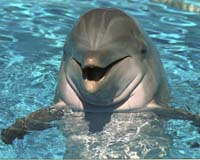| . |  |
. |
Boulder CO (SPX) Oct 21, 2009 A mysterious basin off the coast of India could be the largest, multi-ringed impact crater the world has ever seen. And if a new study is right, it may have been responsible for killing the dinosaurs off 65 million years ago. Sankar Chatterjee of Texas Tech University and a team of researchers took a close look at the massive Shiva basin, a submerged depression west of India that is intensely mined for its oil and gas resources. Some complex craters are among the most productive hydrocarbon sites on the planet. Chatterjee will present his research at this month's Annual Meeting of the Geological Society of America in Portland, Oregon. "If we are right, this is the largest crater known on our planet," Chatterjee said. "A bolide of this size, perhaps 40 kilometers (25 miles) in diameter creates its own tectonics." By contrast, the object that struck the Yucatan Peninsula, and is commonly thought to have killed the dinosaurs was between 8 and 10 kilometers (5 and 6.2 miles) wide. It's hard to imagine such a cataclysm. But if the team is right, the Shiva impact vaporized Earth's crust at the point of collision, leaving nothing but ultra-hot mantle material to well up in its place. It is likely that the impact enhanced the nearby Deccan Traps volcanic eruptions that covered much of western India. What's more, the impact broke the Seychelles islands off of the Indian tectonic plate, and sent them drifting toward Africa. The geological evidence is dramatic. Shiva's outer rim forms a rough, faulted ring some 500 kilometers in diameter, encircling the central peak, known as the Bombay High, which would be 3 miles tall from the ocean floor (about the height of Mount McKinley). Most of the crater lies submerged on India's continental shelf, but where it does come ashore it is marked by tall cliffs, active faults and hot springs. The impact appears to have sheared or destroyed much of the 30-mile-thick granite layer in the western coast of India. The team hopes to go India later this year to examine rocks drill from the center of the putative crater for clues that would prove the strange basin was formed by a gigantic impact. "Rocks from the bottom of the crater will tell us the telltale sign of the impact event from shattered and melted target rocks. And we want to see if there are breccias, shocked quartz, and an iridium anomaly," Chatterjee said. Asteroids are rich in iridium, and such anomalies are thought of as the fingerprint of an impact. Share This Article With Planet Earth
Related Links Texas Tech University Darwin Today At TerraDaily.com
 Australian town in Japanese dolphin back-flip
Australian town in Japanese dolphin back-flipSydney (AFP) Oct 16, 2009 An Australian town has issued an apology to its Japanese sister city after backing down on a decision to cut ties over its slaughter of thousands of dolphins, officials said Friday. Broome, a remote tourist town on Australia's rugged northwest coast, in August cancelled its three-decade relationship with Japan's Taiji "while the practice of harvesting dolphins exists". But at an extraord ... read more |
|
| The content herein, unless otherwise known to be public domain, are Copyright 1995-2009 - SpaceDaily. AFP and UPI Wire Stories are copyright Agence France-Presse and United Press International. ESA Portal Reports are copyright European Space Agency. All NASA sourced material is public domain. Additional copyrights may apply in whole or part to other bona fide parties. Advertising does not imply endorsement,agreement or approval of any opinions, statements or information provided by SpaceDaily on any Web page published or hosted by SpaceDaily. Privacy Statement |